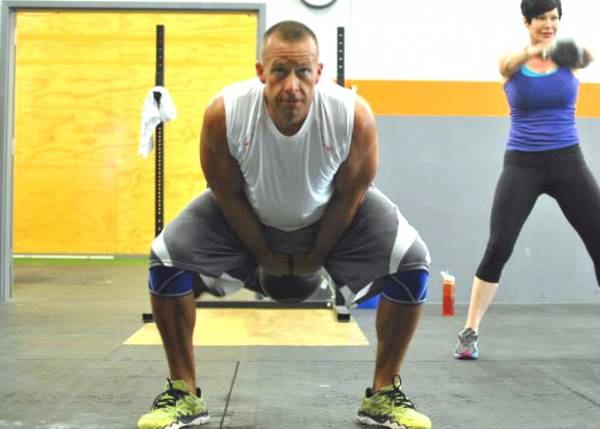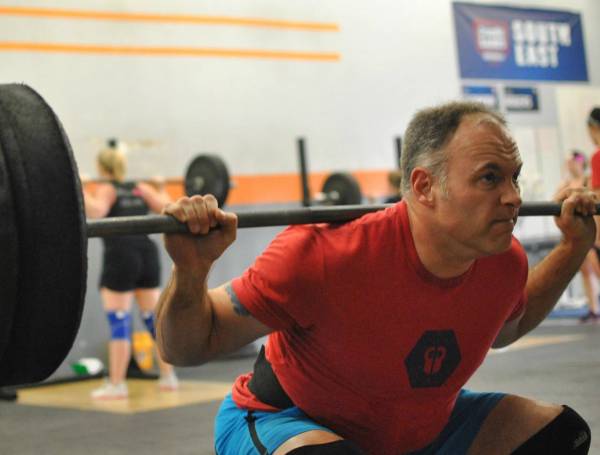Working out gets tough as you get older. But it’s probably not for the reasons you’d think.
Science has shown us that as we pass 35 the body slows down production of hormones beneficial to working out. Building muscle and staying lean are much easier when you have good amounts of these hormones coursing through your veins, so it’s no surprise that performance tends to drop as you age.
Working out gets tough as you get older. But it’s probably not for the reasons you’d think.
Science has shown us that as we pass 35 the body slows down production of hormones beneficial to working out. Building muscle and staying lean are much easier when you have good amounts of these hormones coursing through your veins, so it’s no surprise that performance tends to drop as you age.
But it’s often the hidden changes that make the most difference in the gym after forty. Kids, increased job stresses and responsibilities, an adult relationship that needs time spent on it, and all the other things that come from being a mature adult are often bigger roadblocks than the hormonal issues.
Staving Off Aging
Just recently I went and had some blood work done to see where I was at compared to fifteen years ago when I was 28. Two things from the results struck me:
- I have the same testosterone levels as at 28. That’s pretty good for a 43-year-old guy and goes to show the power of clean eating and hard training. They really are as close as you can get to the fountain of youth.
- It’s a little sad that at 28 I had no more juice in my body than I do now. It goes a long way to explaining the reasons behind me never seeming to be able to progress beyond a certain point with training – my body chemistry was just never designed for maximal strength.
Knowing this about myself and looking at my old training diaries, I see some remarkable footprints that help me figure out the best path forward for people looking to stave off aging.
Good Things Happen Early
Working as a personal trainer is both a blessing and a curse. On the bad side, it means because I have woken early for over twenty years now, I miss out on a lot of social events, as I need to get to sleep. On the bonus side, going to bed early is the single best thing you can for your body.
“You need to make a choice as to the type of life you want to lead. If you’ve made the decision that you want to live a healthy, fit life, then going to bed early is part of it.”
The hard part about this for maturing athletes is that job and family responsibilities may make getting to bed early difficult. You need to make a choice as to the type of life you want to lead. If you’ve made the decision that you want to live a healthy, fit life, then going to bed early is part of it. That will likely mean the end of midweek social events, skipping TV after dinner, and strict adherence to stopping work after 8:00pm.

The hidden bonus of going to sleep early isn’t just in how beneficial the sleep is for you, though. The real bonus is in waking early to train. After the age of forty, a strange thing starts to happen in the workplace. Suddenly you have a job with responsibility. Maybe you’re even in charge of a team or department. You have meetings, phone calls, video conferences, and all sorts of other appointments.
“The hidden bonus of going to sleep early isn’t just in how beneficial the sleep is for you, though. The real bonus is in waking early to train.”
But I’ll bet you it’s incredibly rare that someone wants to speak with you at 6:00am. The problem most people have with training early is that they go to sleep too late. But you’ve fixed that by deciding to live a healthy lifestyle and get enough sleep. Getting up at 5:00am for a 6:00am session won’t be an issue for you.
Training early has a few benefits:
- You train while testosterone is at its highest for the day, meaning your workout will be done in the most beneficial hormonal state.
- Because you’re likely to be able to train frequently and consistently, you’ll make better progress.
- It sounds counterproductive, but you are less likely to feel at your best strength-wise early in the day. This will limit the weights you can use, making the risk of injury less than if you trained later in the day.
Moderate the Use of Intensity
Judicious use of intensity in training will keep you performing as well as possible for as long as possible. But it’s a double-edged sword. The aging body simply can’t train hard every session, nor might it even be possible to train hard for the entire session.
A good way to split up the week is into days with different themes. For a three-day-per-week split have a day each of:
- Max strength
- General strength and hypertrophy
- Power endurance
For four-days-per-week use:
- Max strength
- Mobility
- General strength and hypertrophy
- Power endurance
You may think you need more maximal strength work, but if you’ve been training consistently for a few decades, then your strength levels will be consistent. Maintaining strength is relatively easy and requires little work. Performing only one maximal strength session each week has the added benefit of not stressing the joints too much.
“You may think you need more maximal strength work, but if you’ve been training consistently for a few decades, then your strength levels will be consistent. Maintaining strength is relatively easy and requires little work.”
The hypertrophy training is an important booster both metabolically and muscularly. One of the determinants of aging is loss of skeletal muscle. Hypertrophy training tends to be at a lower intensity than maximal strength work. This means you still get extra strength training, but at deliberately moderate intensities. There’s a big difference to the body between lifting at 85+% like you need to for strength development and the approximate 70% needed for hypertrophy work.
There are also benefits from a hormonal standpoint. Typical hypertrophy training is done in a semi-rested state, meaning that lactic acid production is high during training. This stimulates growth hormone production, which helps to keep you young.

If you’re an endurance athlete, you’ll find that having a high ratio of easy sessions to every hard session will help keep you pain free and training long after most of your peers have retired. I’ll also add that if you’re a runner, make sure to use softer surfaces such as grass, dirt trails, and even treadmills to soften the forces of running. One of the ways I program runs for clients is to periodize both pace and the surfaces they run on to make sure no unnecessary damage is done in training.
Don’t Train Like a Twenty-Year-Old
These two things alone – the combination of going to bed early and training early, along with the smart use of intensity – will help stave off aging for as long as possible. Don’t try to train like a twenty-year-old. You’re simply not going to be able to reliably.
If you act your age in the gym, you’ll be able to play around outside like a younger athlete for a long time yet. But if you try the other approach and train all-out like a twenty-year old, you’ll find you spend the time away from the gym on the couch recovering. Wouldn’t it be better the other way around?
More Like This:
- Exercise Is Not a Final Destination: 3 Ways to Make Exercise Count
- Over 40 Weeks of Free Mature Athlete Workouts
- Live Long and Prosper: Fitness for Mature Athletes
- What’s New on Pulse Beat Fit Today
Photos courtesy of CrossFit Impulse.






